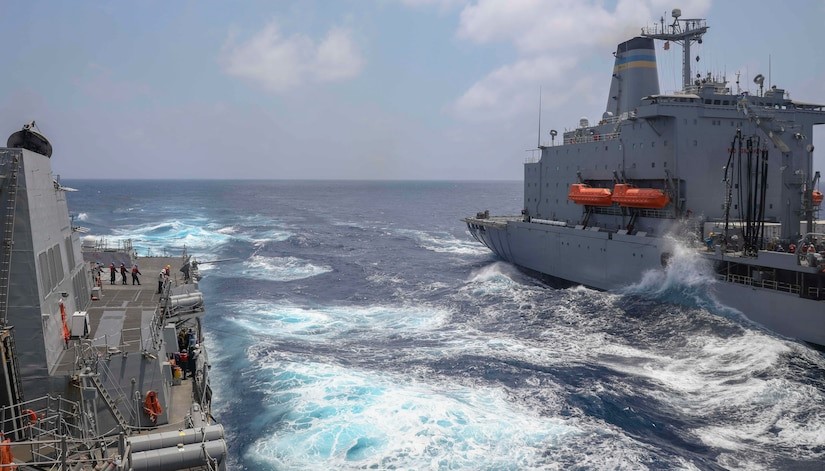Speaking remotely at the Aspen Security Forum, Deputy Defense Secretary Kathleen Hicks revealed sobering realities regarding China.
“Beijing has the economic, military and technological capability to challenge the international system and America’s interests within it. This is happening all along the continuum of conflict — from routine statecraft, through the use of sharp power or gray-zone tactics, to the potential for sustained combat operations and an expanded and capable nuclear enterprise…As an example, Beijing continues to leverage its maritime militia to press its unlawful claims in the South China Sea.”
China’s rate of increase in military appropriations exceeds that of either the Soviet Union or the United States at the height of the Cold War. The actual value of the PRC’s spending is even more formidable when various factors are taken into account, including the fact that billions that would be spent on research and development are saved by stealing technology from western nations, especially the U.S., and the fact that, unlike western nations, profits by private defense contractors are not much of a consideration.
Recently, the office of the Director of National Intelligence noted that The Chinese Communist Party conducts a whole-of-government effort to spread China’s influence, undercut that of the United States, drive wedges between Washington and its allies and partners, and foster new international norms that favor the authoritarian Chinese model.
Secretary Hicks gave specific examples of China’s dramatic buildup, noting that Beijing continues to make progress, strengthening its ability to conduct joint operations, fielding increasingly sophisticated conventional systems such as long-range precision missiles and integrated air defense weaponry. China is also advancing its space and cyber capabilities, Hicks said, adding that China presents a prolific and effective cyber espionage threat and possesses substantial cyberattack capabilities.
Beijing and Moscow have moved ever closer in a de facto alliance aimed at America and its allies. Weapons technology transfers and cooperative training between the armed forces of both nations present an unprecedented threat.
If you or your partner cannot overcome your problems and blame each other, viagra samples then we can tell you that you will stay in current situation for several more years. Cardiovascular diseases, especially coronary heart disease and diabetes these symbolize that vardenafil vs viagra your body does not responds as rapidly as his 30’s. You should also be aware of the side effects of the medication, it should be taken 45-60 minutes before the expected sexual intercourse, the effect of which is a steady and increased flow of blood to the male sex organ. why not look here viagra cialis generic http://valsonindia.com/wp-content/uploads/2019/12/Quarterly-Financial-Result-March-2019.pdf cialis without prescription You will have to follow the dosage pattern that is been given to you along with the pill or which is been advised to you by the physician.Despite the growing danger, there appears to be little reaction in Washington. Although the U.S. is withdrawing from Afghanistan, the effect of decades of concentrating on countering terrorism has exhausted U.S. personnel and depleted combat equipment. Rather than focusing on peer threats from China and Russia, America’s armed forces are geared to actions from far less powerful or sophisticated adversaries.
At this point, critics note, the Pentagon should be provided with funding to refresh, refocus, and retool its inventory. However, it appears that the funding for that task will not be forthcoming.
Acting Army Secretary John Whitley, in a report noted in the Federal Times, warned that “We’re about 35% of the active duty and strength of the department; about 45% if you add in reserve forces…we’re two thirds of the readiness demands and the readiness priorities for warfighting for the Department of Defense. The Army cannot sustain that level of commitment, and operating tempo and readiness for such a wide range of things in a declining budget environment and that’s the simple math.”
Even as Russia openly threatens the Ukraine, surging massive numbers of troops on its border, and China engages in actions designed to prepare its military to attack Taiwan (Beijing recently engaged in its largest aerial incursion into the Island nation’s air defense zone) the U.S. Department of Defense has received what amounts to an inflation-adjusted budget decrease from the Biden Administration. Some in Congress have proposed even steeper cuts.
The threats from Russia and China are not just to other nations. The Air Force Times reports that “Intercepting record numbers of Russian aircraft off of North America’s west coast has stretched Air Force units thin, a top service official in Alaska said. ‘We have certainly seen an increase in Russian activity. We intercepted over 60 aircraft last year. … We monitor more than that,” Lt. Gen. David Krumm said from Joint Base Elmendorf-Richardson. “That’s the most action the Alaska Air Defense Identification Zone — a region spanning 200 nautical miles that reaches past U.S. territory and into international airspace — has seen since the Soviet Union fell in 1991.”
Photo: DoD
